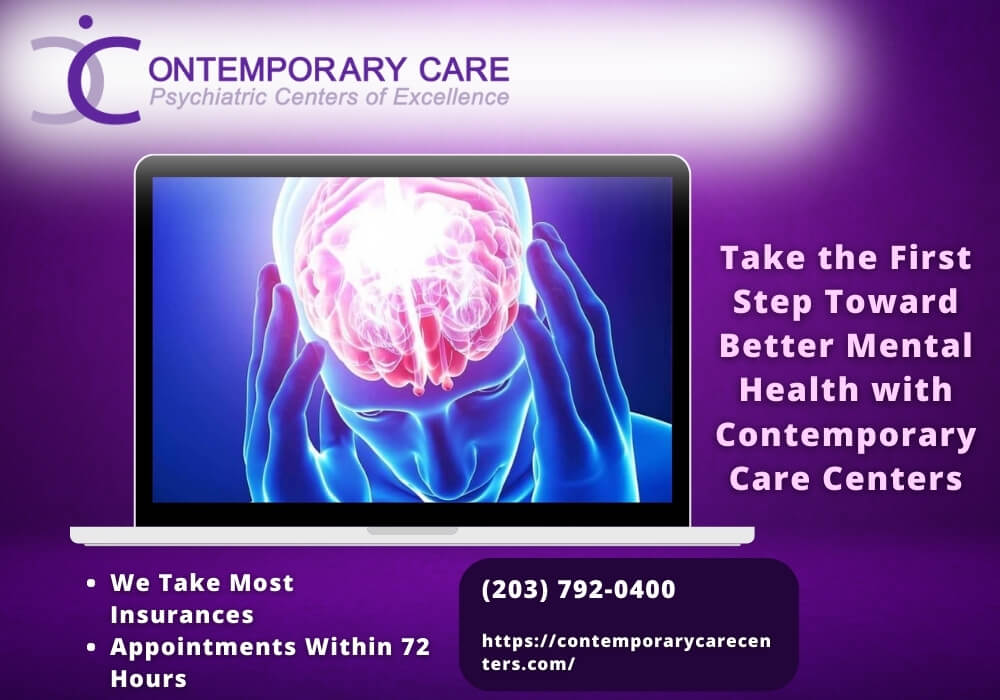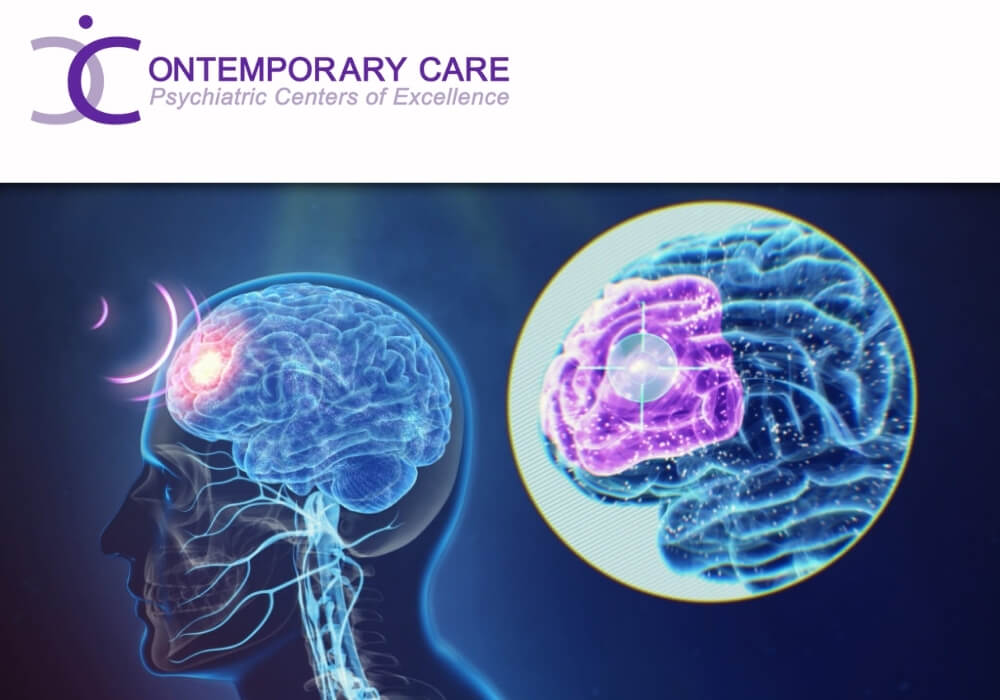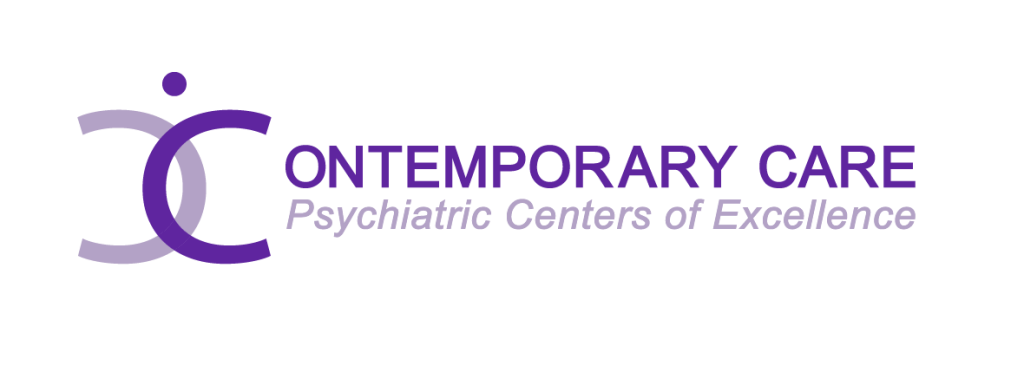Imagine finding a treatment that doesn’t involve medication but still offers real hope and relief from depression. Transcranial Magnetic Stimulation (TMS) therapy is making that a reality for many people. With its ability to stimulate brain activity and deliver lasting results,
This innovative treatment is gaining popularity, and it’s easy to see why. With its non-invasive approach and impressive success rates, more and more people are finding relief through TMS. Using magnetic fields to stimulate brain activity, TMS offers a fresh start for those without luck with traditional methods.
What Is TMS Therapy?
TMS therapy uses magnetic fields to move brain cells and stimulate areas of the brain that are underactive in people with depression to improve depression symptoms there.
TMS also known as Transcranial Magnetic Stimulation is a non-invasive medical treatment used to treat depression. It is a noninvasive brain stimulation therapy that uses magnetic pulses to the brain and magnetic stimulation therapies stimulate specific areas of the brain to improve symptoms, mainly for treating depression.
Unlike medications, It’s a very targeted and focused treatment for people who with depression symptoms haven’t responded to other therapies.
How Does TMS Work?
TMS uses magnetic pulses to alter the brain’s neural networks. These pulses work to stimulate increased cell activity in the areas of the brain that regulate mood symptoms.
During a TMS therapy session, a device with a magnetic coil is placed near your head. The coil delivers painless magnetic pulses to the mood-regulating regions of your brain, particularly the prefrontal cortex, which is frequently underactive in individuals with depression. These magnetic pulses stimulate brain activity and improve mood and cognitive function.
Different types of TMS
TMS therapy can be conducted using various methods, differing in magnetic field strength and techniques for application.
- Magnet strength. Magnet strength is measured in teslas (T). TMS devices create a magnetic field of 1.5T to 2T, like an MRI scanner, but the field is more focused due to the TMS device’s smaller size.
- Pulse frequency. Each magnetic field activation is a pulse, and its rate, measured in hertz (Hz), indicates frequency. TMS can deliver low-frequency pulses at 1 Hz or high-frequency pulses from 5 to 10 Hz. When pulses are delivered repeatedly, it’s called repetitive transcranial magnetic stimulation (rTMS).
- Pulse patterns. TMS can also employ various pulse patterns for treatment, such as theta-burst stimulation (TBS). In TBS, three bursts of 5 Hz occur in one second, totaling 15 pulses. This burst pattern accelerates treatment, roughly five to six times faster than other methods.
- Magnetic coil type and stimulation target vary by brain structure. Deep TMS (dTMS) using an H-shaped coil, reaches deeper brain areas than rTMS and TBS. Research shows that dTMS effectively treats disorders like OCD.
Who Can Benefit from TMS Therapy?
This cutting-edge treatment could be a game-changer for those struggling with depression, anxiety, PTSD, and OCD, especially when other options have fallen short.
Let’s explore who can benefit from TMS and how it can make a real difference.
Ideal Candidates for TMS Therapy
TMS therapy is particularly effective for people who have tried other treatments with limited results. Here’s a breakdown of who might be an ideal candidate:
- People with Treatment-resistant Depression: If you’ve tried multiple antidepressants and talk therapy sessions without improvement, TMS could offer new hope in treating patients with major depression.
- Those Suffering from Anxiety Disorders: Some studies suggest that TMS therapy can also help alleviate anxiety, making it a versatile treatment option.
- Patients with PTSD: TMS has shown promise in treating patients with post-traumatic stress disorder and severe depression, helping to reduce mood symptoms.
- Individuals with OCD: For those struggling with obsessive-compulsive disorder, TMS might help reduce obsessive thoughts and compulsive behaviors, especially when other forms of treatment for depression and medication haven’t worked.
How Successful Is TMS Therapy? Understanding the TMS Therapy Success Rate
With its FDA approval and proven track record in treating severe depression and anxiety, this non-invasive treatment is making waves as a powerful option for those seeking lasting relief.
Despite its promising results, questions remain about its overall effectiveness and the time required to see improvements. Let’s examine how TMS therapy addresses depression, anxiety, and OCD.
How Successful Is TMS in Treating Depression?
Transcranial magnetic stimulation (TMS) is proven to be a safe and effective way to relieve depressive symptoms, even for those who haven’t responded to other treatments. Research shows that TMS therapy success rates for depression are around 75%—meaning 3 out of 4 people find relief from their symptoms, and half of them achieve full remission. Not only does TMS help with treatment-resistant depression, but it also provides long-lasting results.
TMS therapy success rate For Anxiety
While TMS for anxiety isn’t as extensively researched as it is for depression, studies show encouraging results. Research shows promising TMS therapy success rates of anxiety, including comorbid anxiety with depression (often called anxious depression) and generalized anxiety disorder (GAD).
For example, one study discovered that 84.6% of individuals with GAD saw positive results from TMS, with many achieving remission. Another study using low-frequency TMS showed a significant reduction in anxiety and panic symptoms, with severity dropping by 78%. These results suggest that TMS could be a great option for people struggling with various types of anxiety.
TMS therapy success rate For OCD
Obsessive-compulsive disorder (OCD) affects about 2.3% of US adults and is usually treated with talk therapy and SSRIs. However, 40% to 60% of people find SSRIs ineffective and may also face bothersome side effects.
In cases where individuals had experimented unsuccessfully with three or more OCD medications, TMS therapy demonstrated marked superiority over a placebo intervention. In TMS trials, the placebo group underwent “sham” TMS procedures, which lacked the actual delivery of magnetic pulses to the brain. In this context, 8% of those who received a placebo reported some symptom improvement, while 41% of people who received real TMS therapy felt better.
In a comprehensive study conducted across 22 different clinics and hospitals, 57.9% of patients treated found relief following 29 sessions of TMS, with symptoms typically alleviating from around the 20th session.
These proven TMS therapy success rates for OCD have contributed to the FDA approval of Deep TMS, as administered by Madison Avenue TMS & Psychiatry, for treatment-resistant OCD.
TMS therapy success rate For PTSD
In the case of TMS therapy success rate for PTSD, the treatment has also demonstrated promise. Around 6% of people in the US will experience post-traumatic stress disorder (PTSD) in their lifetime, and this number is nearly doubled for military veterans. Because PTSD often goes hand in hand with anxiety and depression, researchers have looked into whether TMS could help with PTSD as well. The results so far have been encouraging.
A recent review of the state of TMS treatment for PTSD analyzed the existing literature on using different TMS techniques (right- vs. left- vs. bilateral brain stimulation) and found that TMS usually reduced PTSD symptoms, on average, by about 25%-35%, with response rates between 41% and 62.5%.
What Factors Influence the Success of TMS Therapy?
Various factors—like age, personality, and Treatment-resistant level play a significant role in determining how effectively this innovative therapy can help you on your path to recovery.
TMS treatment is generally effective for most patients, but individual responses can vary. Let’s explore factors that affect the success of TMS therapy.
- Age: TMS is more effective in patients who are younger than 60.
- Personality: Patients who scored higher on the temperament and character inventory (TCI) personality scale for tenacity (those who are tenacious tend to persevere even when annoyed or weary) responded more swiftly to TMS treatment. Psychiatrists worldwide utilize TCI to determine and categorize personality types. Psychiatrists globally use the TCI to assess and categorize personality types.
- Treatment-resistant level: TMS is often more effective for patients who have not responded to multiple antidepressants.
- Using antidepressants: Patients undergoing TMS while on antidepressants may see better results, as the treatments can complement each other.
TMS is not recommended for individuals with a history of seizures or a permanent metal implant in the head.

How long do TMS results last?
While it’s not a permanent solution, many patients find that this innovative treatment offers lasting relief from depression and anxiety, often holding strong for months after the final session.
While depression and anxiety don’t have permanent cures, and TMS isn’t a one-time fix, it can provide substantial and lasting relief when other treatments haven’t worked. For those who have tried various forms of therapy and medications without success, TMS can offer a new lease on managing their symptoms.
Many patients notice a significant and enduring improvement after a four to six-week TMS treatment. Results can last over a year, with some experiencing full relief for six to twelve months.
What Are the Advantages of TMS?
TMS therapy stands out as a game-changing option, offering hope and healing without surgery or long recovery times!
Let’s explore the advantages that make it a useful treatment:
- It’s non-invasive. You don’t need surgery for this procedure, and you can go about your day once a session ends. It also doesn’t involve anesthesia of any kind.
- It’s safe. Seizures are the most serious side effect of TMS, but they occur in less than 0.01% of sessions. Most other side effects are mild and usually resolve within a few minutes.
- It’s effective. The TMS therapy success rate varies by condition, but research indicates it is effective.
- It can save lives. One of the key conditions that TMS therapy treats, major depressive disorder, can be so severe that it leads to death by suicide. TMS therapy can save lives when it brings improvements to depression symptoms or causes depression to go into remission entirely. rewrite
- It can work cooperatively with other treatments. TMS is frequently combined with other treatment options, such as medications and therapy, to improve overall outcomes.
Are There Any Risks, or Side Effects of TMS Therapy?
The good news is that TMS has relatively few side effects, risks, and complications, making it a safe and effective option for many seeking relief from depression and anxiety!
The most likely serious side effect of TMS therapy is having a seizure. However, seizures are infrequent. The risk of having a seizure during a TMS session is shallow—about 0.01%, or less than 1 in 10,000.
The most likely complications, most of which are mild and usually don’t last more than several minutes after a session, include:
- Headaches
- Pain, usually in your scalp or neck
- Dizziness or lightheadedness
- Tingling in the muscles of your face or scalp
- Temporary tinnitus (ringing in your ears)
- Unusually high sensitivity to sound (hyperacusis)
How many TMS sessions are needed for positive results?
Typically, a course of treatment spans about four to six weeks with daily sessions, and you could start experiencing positive changes in your mood while still enjoying your daily routine!
A single TMS session lasts about nineteen or twenty minutes. At a TMS clinic, you sit in a comfortable treatment chair, supervised by a licensed psychiatrist, while you receive treatment. It’s done outpatient, meaning you visit a clinic for treatment and can go home afterward. You won’t have to stay overnight in the hospital, and you can jump back into your daily routine right after your session.
Some people worry about the effects of prolonged exposure to magnetic fields from TMS therapy. However, while TMS uses magnetic pulses similar to those in an MRI machine, the pulses are brief. The total magnetic exposure from a full course of TMS therapy is less than what you’d get from a single MRI scan.
What happens if TMS doesn’t work?
Even though TMS therapy is effective for about 70-80% of people with depression, it doesn’t work for everyone. But don’t lose hope! There are still plenty of options to explore that could lead you to the relief you’ve been searching for.
For many, TMS has a high success rate and is a final option after other treatments fail to produce positive results. If TMS doesn’t work, there’s still hope. Treating depression and anxiety usually involves trying out different options to find what works best for each individual. It’s often a matter of experimenting with various approaches to see what helps most. If one course of TMS therapy doesn’t work, you may benefit from a second course, often in new combinations with different treatment methods.
For example, if TMS therapy on its own doesn’t work, you could still see positive results by combining TMS with:
- Medications for depression or anxiety
- Counseling or different types of therapy
- Lifestyle adjustments, like changes in diet or starting an exercise routine
- A change in supplemental treatment, such as an adjusted prescription or a different therapist.
FAQs
1. What is the TMS therapy success rate for depression?
TMS therapy has a high success rate of 75% for treating depression, with 50% of patients treated achieving remission. It’s effective for treatment-resistant depression and offers an alternative to other treatments like medication or electroconvulsive therapy
2. How long do TMS therapy results last?
The effects of TMS therapy can last six months to over a year. After a four to six-week course, most patients see long-term relief from depression and anxiety symptoms.
3. How does TMS therapy compare to other treatments?
TMS therapy has a higher success rate (70-80%) for treating depression than antidepressants, which average 40-60%. It’s an effective treatment for those not responding to medication or talk therapy.
4. Can TMS therapy help with anxiety and OCD?
Yes, TMS therapy has an 84.6% success rate for anxiety and is effective in treating patients with severe OCD when other treatments fail.
5. How quickly can patients expect to see results?
Most patients notice improvements after 20 sessions, with significant changes by the sixth week of TMS therapy.
Take the First Step Toward Better Mental Health with Contemporary Care Centers
Are you struggling with treatment-resistant depression, anxiety, or other mental health conditions that are holding you back from living your best life? It’s time to explore advanced, evidence-based treatments designed to make a lasting difference. At Contemporary Care Centers, we specialize in innovative solutions like Transcranial Magnetic Stimulation (TMS) therapy—a safe, non-invasive option that has helped countless individuals find relief when traditional treatments haven’t worked.
Our compassionate team of mental health experts is here to give you personalized care that fits your specific needs. From your first consultation to your treatment plan, we’ll guide you every step of the way with empathy and expertise. Experience a brighter future with the help of cutting-edge therapies that can restore your mental well-being and renew your hope.
Don’t wait any longer—contact us today to schedule your consultation and discover how TMS therapy can be the key to overcoming your mental health challenges for good. Let Contemporary Care Centers be your partner in reclaiming your life and achieving long-term relief.



